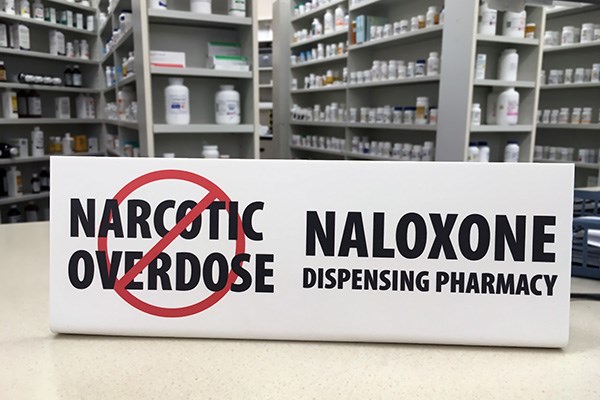Seemingly odd findings have arisen from a study of naloxone use in the battle against opioids.
A half-century ago, as football players traded leather caps for helmets, the number of football-related deaths and intracranial hemorrhages declined significantly. However, players began to play more aggressively with this newfound protection, leading to a 5- fold increase in spine fracture-dislocations, doubling the quadriplegia rate, and, some argue, contributing to the current concussion crisis in the NFL.
Helmets in football are an example of "moral hazard": individuals exhibiting riskier behavior after safety measures are in place. Clearly these interventions can have very positive individual effects, but the overall benefit may be partially offset by accompanying behavior change.
A recent paper applies this moral hazard framework to public health by evaluating the effects of increasing naloxone accessibility on opioid mortality and use. Naloxone, an opioid antidote, has been presented as a solution for the current opioid epidemic, and has been made increasingly accessible in all 50 states. Since this has happened asynchronously across the country, the authors used this natural experiment to compare outcomes before and after naloxone access expansion, while controlling for other relevant factors.
They find, somewhat discouragingly, that expanding access to naloxone had no effect on opioid-related mortality, but was related to an increase in arrests for sales and possession of opioids, opioid-related ED visits, and opioid-related theft. To ensure that these findings weren't caused by an unknown confounding variable, the authors then ran 3 placebo tests by examining the effect of naloxone access on mortality from suicide, heart disease, and motor vehicle accidents. They found no change in those outcomes with naloxone access.
When viewed through the moral hazard framework, these findings are not unexpected. The authors suggest that "while the risk per use has gone down due to naloxone access, the number of uses increases enough that we find no net effect on opioid-related mortality." This is not a recommendation to withhold naloxone, but a suggestion that its effectiveness in combating the opioid epidemic may be limited in isolation. It is a reminder that human behavior — including moral hazard — should be an important part of decision-making, both on an individual and system level.
ARTICLE: Doleac JL, Mukherjee A. The Moral Hazard of Lifesaving Innovations: Naloxone Access, Opioid Abuse, and Crime. March 6, 2018. Available at SSRN.
ABSTRACT: The United States is experiencing an epidemic of opioid abuse. In response, many states have increased access to naloxone, a drug that can save lives when administered during an overdose. However, naloxone access may unintentionally increase opioid abuse through two channels: (1) saving the lives of active drug users, who survive to continue abusing opioids, and (2) reducing the risk of death per use, thereby making riskier opioid use more appealing. By increasing the number of opioid abusers who need to fund their drug purchases, naloxone access laws may also increase theft. We exploit the staggered timing of naloxone access laws to estimate the total effects of these laws. We find that broadening naloxone access led to more opioid-related emergency room visits and more opioid-related theft, with no reduction in opioid-related mortality. These effects are driven by urban areas and vary by region. We find the most detrimental effects in the Midwest, including a 14% increase in opioid-related mortality in that region. We also find suggestive evidence that broadening naloxone access increased the use of fentanyl, a particularly potent opioid. While naloxone has great potential as a harm-reduction strategy, our analysis is consistent with the hypothesis that broadening access to naloxone encourages riskier behaviors with respect to opioid abuse.
SSRN ABSTRACT ID: 3135264
EMRA + PolicyRx Health Policy Journal Club: A collaboration between Policy Prescriptions and EMRA
 As emergency physicians, we care for all members of society, and as such have a unique vantage point on the state of health care. What we find frustrating in our EDs - such as inadequate social services, the dearth of primary care providers, and the lack of mental health services - are universal problems.
As emergency physicians, we care for all members of society, and as such have a unique vantage point on the state of health care. What we find frustrating in our EDs - such as inadequate social services, the dearth of primary care providers, and the lack of mental health services - are universal problems.
As EM residents and fellows, we learn the management of myocardial infarctions and traumas, and how to intubate, but we are not taught how health policy affects all aspects of our experience in the ED. Furthermore, given our unique position in the health care system, we have an incredible opportunity to advocate for our patients, for society, and for physicians. Yet, with so many competing interests vying for our conference education time, advocacy is often not included in the curricula.
This is the gap this initiative aims to fill. Each month, you will see a review of a new health policy article and how it is applicable to emergency physicians.



